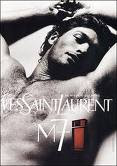When focusing on these three media texts it is evident that they reflect the stereotypical image of ‘the new man’, toned, tanned, perfected looks and slightly in touch with his feminine side. Each of the media advertisements for different men’s fragrances portrays an image that is similar in all three advertisements emphasising that the new man is a stereotype.
Firstly, when focusing on the posture of each of the males they are all notably similar. All three are men are positioned with their arm around the back of their neck as though they know that they are being gazed at and allowing the consumer to openly look at their toned bodies. In addition to this it could add to the sexual objectification of the male’s body, linking to the female gaze, as with their arm locked behind their neck they are welcoming the consumer to admire them and to lure the consumers into buying the product being advertised.
Secondly, although the advertisements are all aimed at the male consumer, it could also be argued that using this technique of the new man in advertising helps gain a wider audience as men will want to buy the fragrance so that he can fit into this stereotype of the perfect new man and the female consumer will want to buy the fragrance for the male as she will think that he will turn into the man of her dreams similar to the men shown in the advertisements backing up the quote from Rowena Chapman in her essay on the 'new man' which suggests that men in advertising are 'characterised as the hopeless dupes of romantic fantasy' (Chapman, 1988) suggesting that the men portrayed in the above advertisement is the stereotypical man that every woman wants, therefore suggesting that they are the recipients of the female gaze.
Thirdly, when focusing on the appearance of the males in the advertisement, in terms of the stereotype of the new man he is portrayed in a feminine way for example the long hair and use of eyeliner within the Gucci advertisement. This could show how popular culture and the feminization of men suggesting that they need to look perfect in order to sell a product, even if it means going to the lengths of wearing makeup. In addition to this, the use of eyeliner in the Gucci advert could have been used to emphasise the male’s eyes and draw attention to the fact that he is using his eyes as a sexual gesture in order for the product to be sold.
Lastly, when reiterating the quote from the book Stereotypical Images of Men in Advertising that advertisements display ‘more of the ideal male body in the ad than the product being advertised’ (Lester, 1996) the three advertisements above all show that this is the case when advertising a product using the image of the new man. It could be argued that that the advertisers use the ‘new man’ as the product or a sexual object in order to lure consumers into buying the actual product which is usually placed in the left or right bottom corner of the image or poster, leaving the rest of the poster to the image of the toned and tanned new man.
Secondly, although the advertisements are all aimed at the male consumer, it could also be argued that using this technique of the new man in advertising helps gain a wider audience as men will want to buy the fragrance so that he can fit into this stereotype of the perfect new man and the female consumer will want to buy the fragrance for the male as she will think that he will turn into the man of her dreams similar to the men shown in the advertisements backing up the quote from Rowena Chapman in her essay on the 'new man' which suggests that men in advertising are 'characterised as the hopeless dupes of romantic fantasy' (Chapman, 1988) suggesting that the men portrayed in the above advertisement is the stereotypical man that every woman wants, therefore suggesting that they are the recipients of the female gaze.
Thirdly, when focusing on the appearance of the males in the advertisement, in terms of the stereotype of the new man he is portrayed in a feminine way for example the long hair and use of eyeliner within the Gucci advertisement. This could show how popular culture and the feminization of men suggesting that they need to look perfect in order to sell a product, even if it means going to the lengths of wearing makeup. In addition to this, the use of eyeliner in the Gucci advert could have been used to emphasise the male’s eyes and draw attention to the fact that he is using his eyes as a sexual gesture in order for the product to be sold.
Lastly, when reiterating the quote from the book Stereotypical Images of Men in Advertising that advertisements display ‘more of the ideal male body in the ad than the product being advertised’ (Lester, 1996) the three advertisements above all show that this is the case when advertising a product using the image of the new man. It could be argued that that the advertisers use the ‘new man’ as the product or a sexual object in order to lure consumers into buying the actual product which is usually placed in the left or right bottom corner of the image or poster, leaving the rest of the poster to the image of the toned and tanned new man.



No comments:
Post a Comment